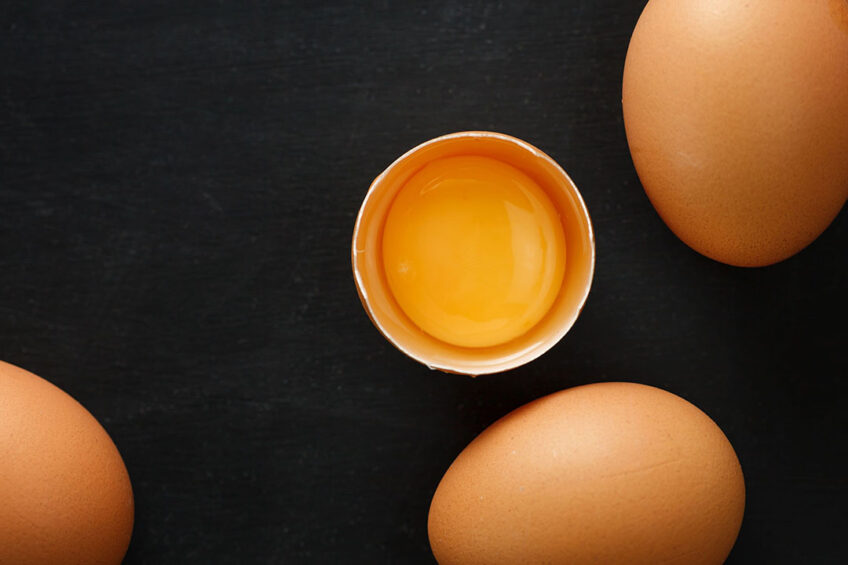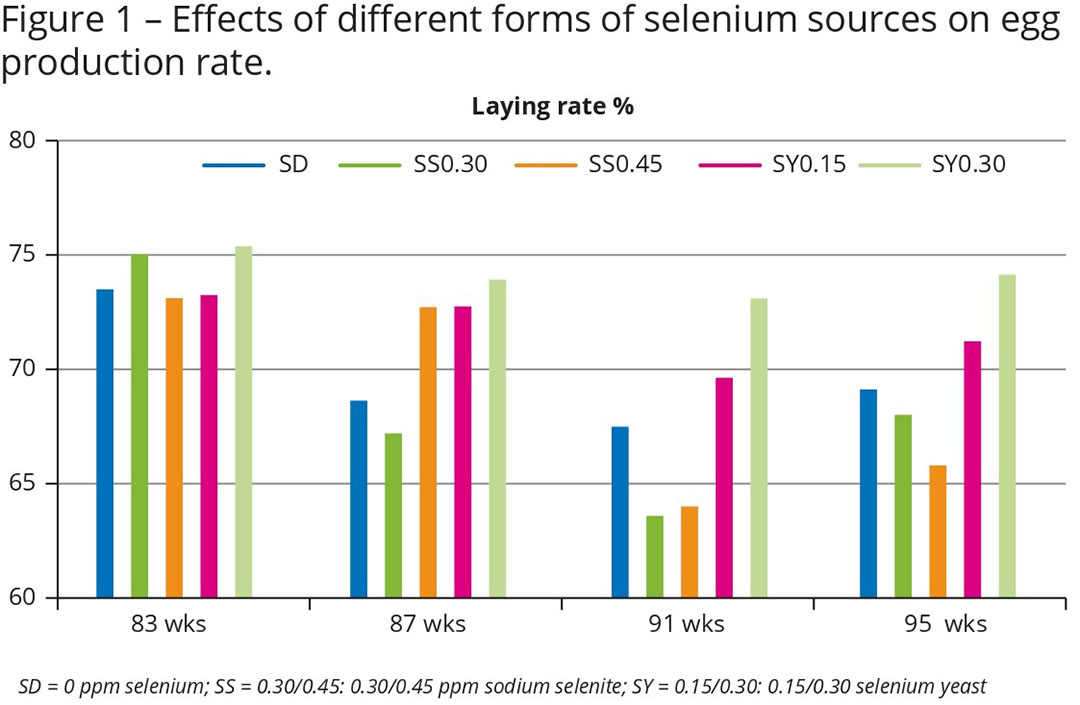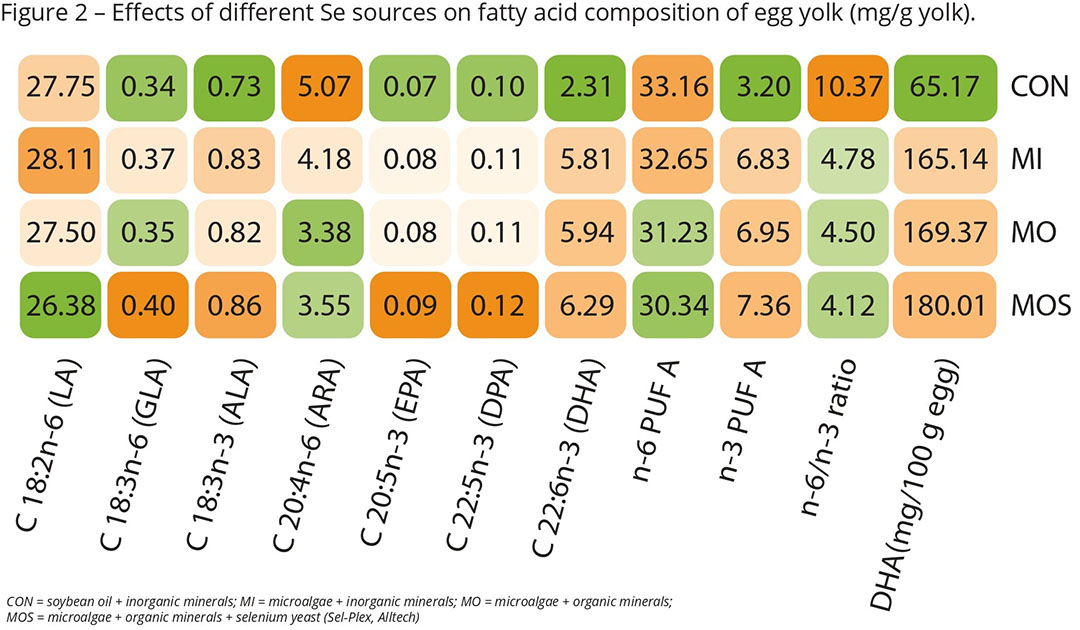Optimising layer performance and designing functional eggs with selenium yeast

Selenium has been recognised as an essential trace mineral for all animals, with the functions of maintaining growth performance, redox potential, reproduction, antioxidants and immunomodulation to name but a few. Since most feed ingredients are selenium deficient, additional supplementation in feed formulation is usually necessary.
Insufficient intake of selenium leads to a deficiency that can manifest in many vital metabolic processes, contributing to mulberry heart disease and liver necrosis in swine, myotonic dystrophy or white muscle disease in ruminants, and exudative diathesis and pancreatic atrophy in poultry. Conventionally, sodium selenite (Na2SeO3) and sodium selenate (Na2SeO4) are the most widely used sources of selenium in poultry diets. However, organic forms of selenium has been developed and are now widely used due to its strong antioxidant properties, low interaction with other feed components and high bioavailability.
Selenium yeast (SY) as an organic form of selenium is generally considered less toxic and more digestible, better retained and more bio-available than inorganic selenium and other organic selenium sources. Moreover, an increasing number of studies are showing that selenium yeast not only effectively improves the antioxidant status and immunity of poultry but also optimises feed conversion, egg production, selenium content in eggs and meat quality. Here, we summarise the many benefits of applying selenium yeast in layer production.
Laying performance
The introduction of modern genetics into the poultry industry has substantially improved laying performance, and producing 500 eggs per hen in 100 weeks is gradually becoming a standard goal in the industry. However, a decline in laying performance during the late production period can shorten the production cycle. Better nutrition is crucial to reversing this decline. Liu and others (2022) revealed that dietary supplementation with 0.30 mg/kg SY (Sel-Plex, Alltech) can slow the decline in egg production that may happen as hens age. In hens 95 weeks of age, selenium yeast increased the laying rate by 5% compared to the control group (Figure 1).

In addition, transcriptome functional enrichment analysis showed that SY supplementation may bolster metabolic processes, immune response, intestinal absorption and more. The extended benefits also include improved egg yolk colour, increased eggshell strength, thicker eggshell, elevated plasma glutathione peroxidase (GSH-Px), total superoxide dismutase (T-SOD) activity and total antioxidant capacity (T-AOC) (P<0.01), and reduced malondialdehyde (MDA) levels (P<0.05).
Stress reduction
In commercial egg production, heat stress (HS) has a deleterious effect on the performance of laying hens, starting with decreased feed intake, impaired gut formation and reduced nutrient digestibility. These, in turn, lead to a substantial decrease in body weight, egg production, feed efficiency and egg quality. In this study selenium was included as a nutritional strategy to minimise deterioration and prevent damage to organs under unfavourable conditions through its involvement in carbohydrate, protein and lipid metabolism.
Abbas and others (2022) showed that the addition of 0.4 mg/kg of selenium yeast to layer diets can improve the performance of laying hens when heat stress occurs, as well as improve villi integrity and hepatocytic normality. At the same time, it can mitigate the oxidative stress and inflammation induced by HS, with lower levels of plasma corticosterone, lipid peroxidation, IL-1β, and TNF-α occurring in HS layers supplemented with SY, compared to those without SY supplementation.

In addition, physiological aging stress is encountered in egg production. Multiomic analysis of the ileal transcriptome and microbiome showed that the addition of 0.3 mg/kg of selenium yeast to the diet affected the metabolic pathways of cell proliferation, innate immune response, calcium binding, zinc binding and retinol metabolism in aged laying hens. Meanwhile, selenium yeast was shown to increase the abundance of specific beneficial bacteria (including bacteria of the genera Veronella, Staphylococcus and Lactobacillus) to regulate the composition of the intestinal microflora, while reducing the abundance of the pathogenic bacteria Pseudoxanthomonas spp.
Selenium content in eggs
Functional or designer foods and their roles in the human diet are currently receiving increasing attention and represent one of the fastest-growing sectors of the global food industry. Supplementing animal feed with selenium can provide a means to increase human selenium intake. In most studies evaluating selenium deposition in the egg yolk and albumen, selenium has been supplemented at 0.3-0.5 mg/kg of the diet for three to eight weeks. Skrivan and others (2008) showed that feeding SY to hens resulted in a relative increase in selenium content in the yolk by approximately 215%. Similarly, the relative increase in albumen selenium was 229%.
A striking finding after selenium supplementation was the doubled level of α-tocopherol concentration in egg yolk (Table 1), as well as elevated selenium and α-tocopherol in chicken breast, leg muscle and liver. The literature explanation was that the selenoenzyme thioredoxin reductase can recycle ascorbic acid which, in turn, can recycle tocopherol, leading to what is known as the ‘sparing effect’ of increased dietary selenium on vitamin E requirements.
Fatty acid composition of eggs
Omega-3 polyunsaturated fatty acids (n-3 PUFA), mainly eicosapentaenoic acid (EPA, 20:5 n-3), docosahexaenoic acid (DHA, 22:6 n-3) and alpha-linolenic acid (ALA, 18:3 n-3), have been suggested to reduce the risk of cardiovascular disease and certain forms of cancer, and to improve brain development and function. Manipulating the composition of egg yolk by improving its polyunsaturated fatty acid (PUFA) content, particularly with regard to omega-3 fatty acids, is considered a common goal in developing eggs as a functional food. It has been suggested that selenium sources, especially organic ones, could interact with PUFA. This may occur through Se-dependent GSH-Px which plays an important role in regulating the biosynthesis of prostaglandins from their precursor eicosanoids.
Liu (2021) showed that the content of n-3 PUFA and n-6 PUFA was affected by selenium supplementation. The total n-3 PUFA in the egg yolks of the selenium yeast group was significantly increased compared to the control group (P<0.05), while the n-6/n-3 PUFA was significantly reduced (P<0.05) (unpublished data). However, the relatively high concentration of unsaturated fatty acids in fortified egg products makes them susceptible to oxidative damage during cooking, preparation and storage. Lipid peroxidation created by free radicals can cause more oxidation damage as chain reactions trigger secondary oxidation reactions. Ren and others (2013) showed that supplementation of antioxidants, such as selenium, in the diet of laying hens can reduce malondialdehyde (MDA) in eggs by 40% during cooking, and cholesterol oxidation products by 12% during cooking, thereby significantly reducing the damage to the nutritional value of eggs during cooking.
Benefits
In conclusion, dietary supplementation with selenium yeast can improve the antioxidant status of laying hens, enhance stress resistance, increase egg production and improve eggshell quality. Selenium yeast can also improve the content of selenium, vitamin E and n-3 PUFA in eggs, which is important for the efficient production of laying hens and the development of functional foods.
References available on request.













